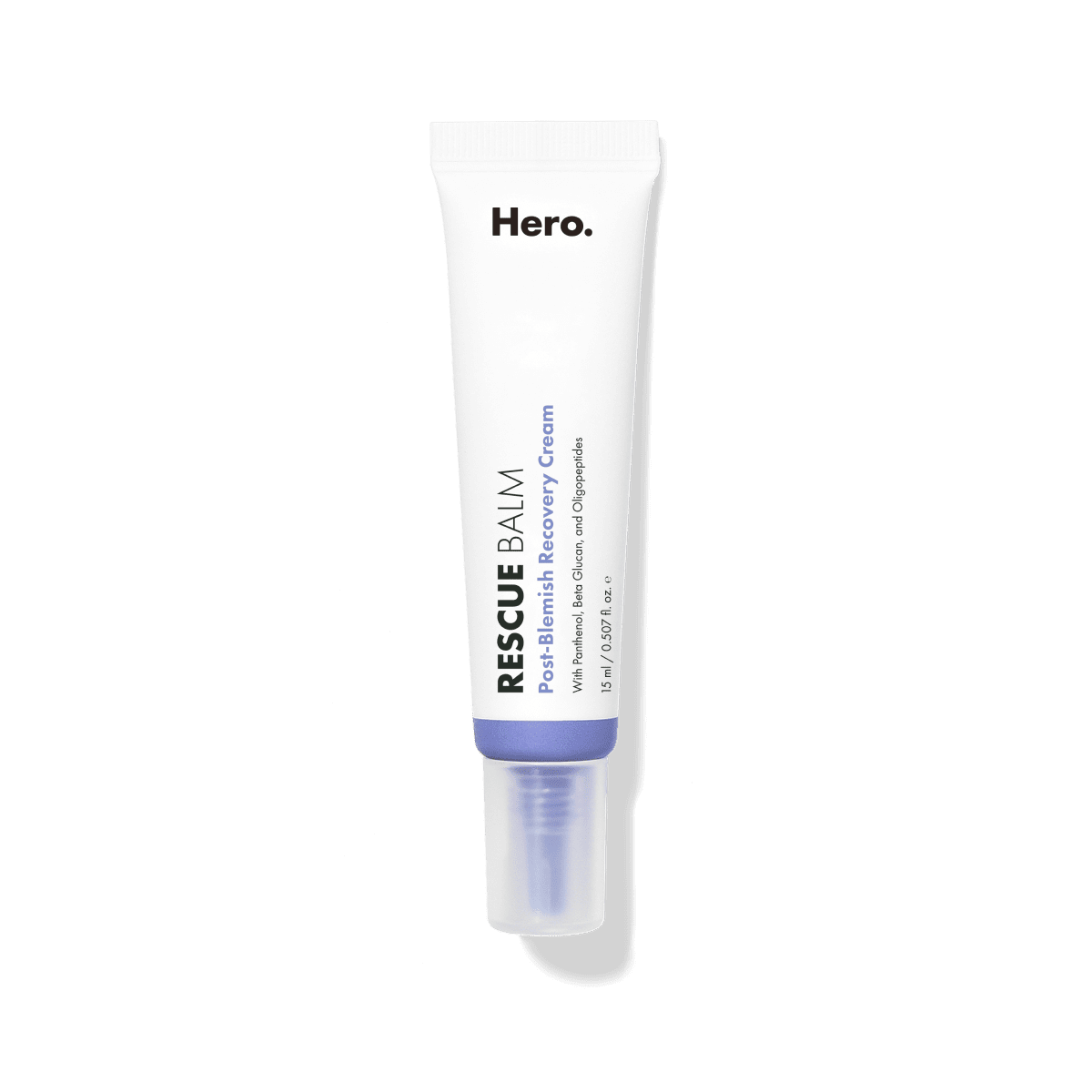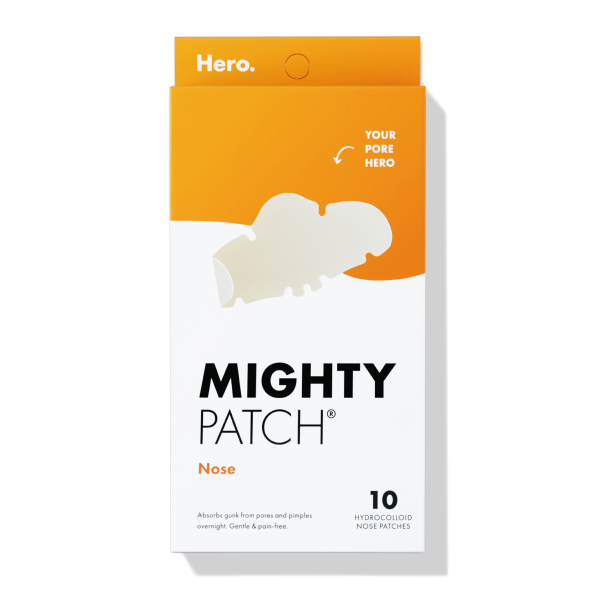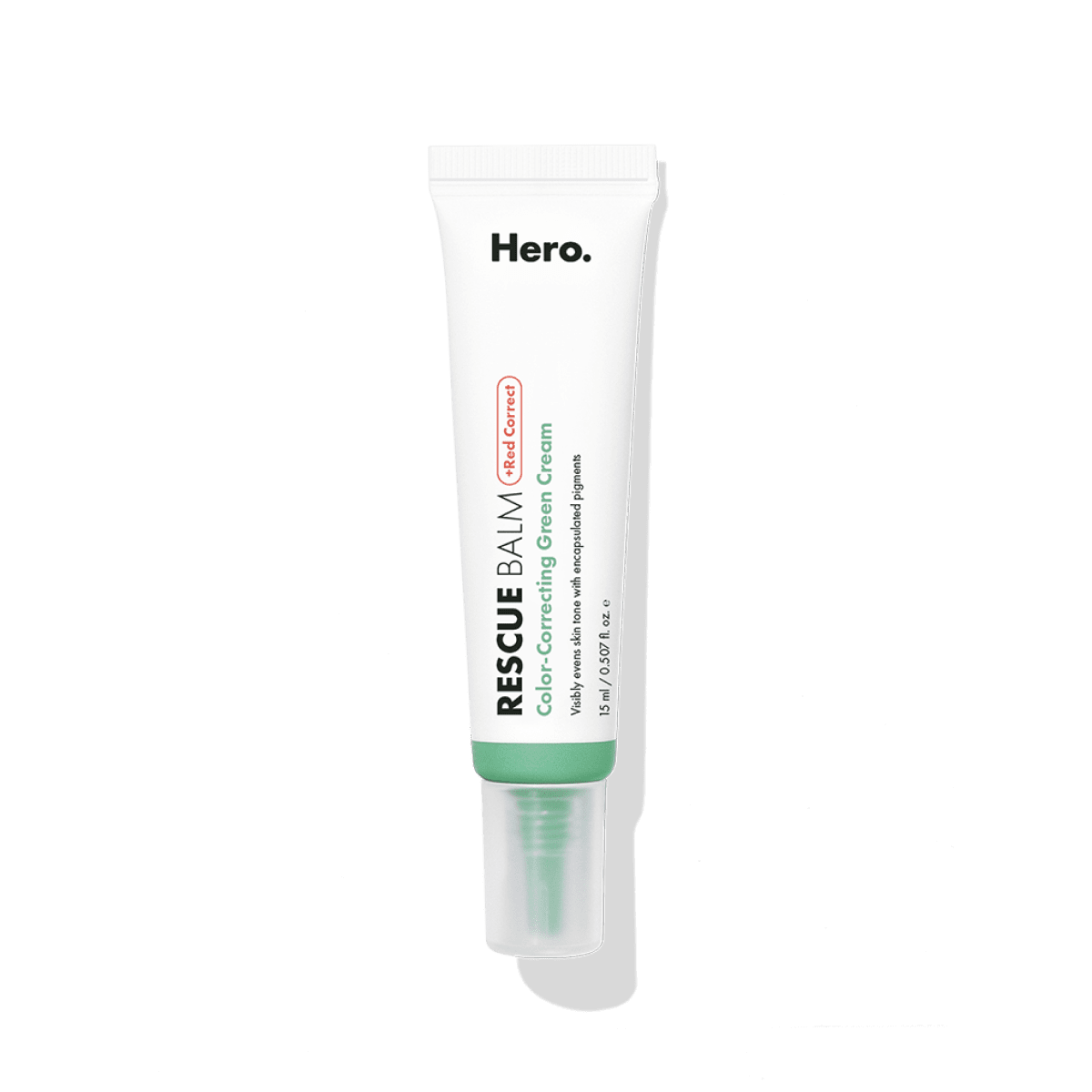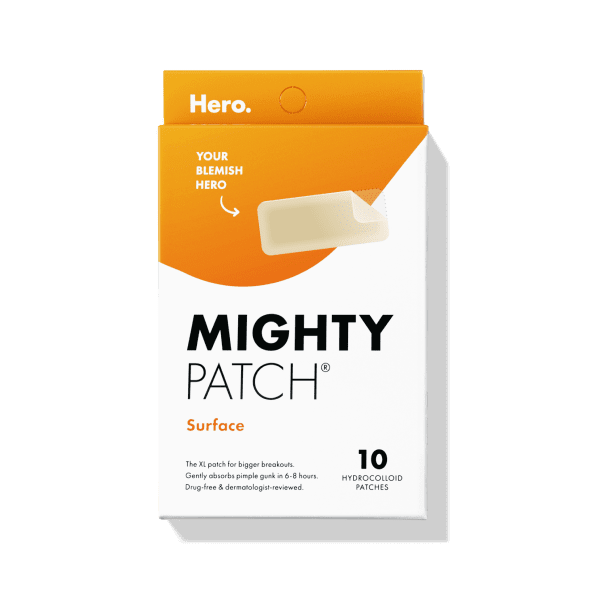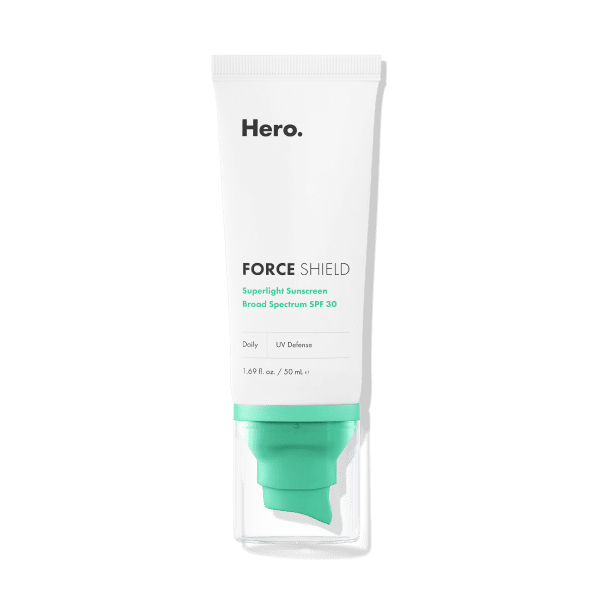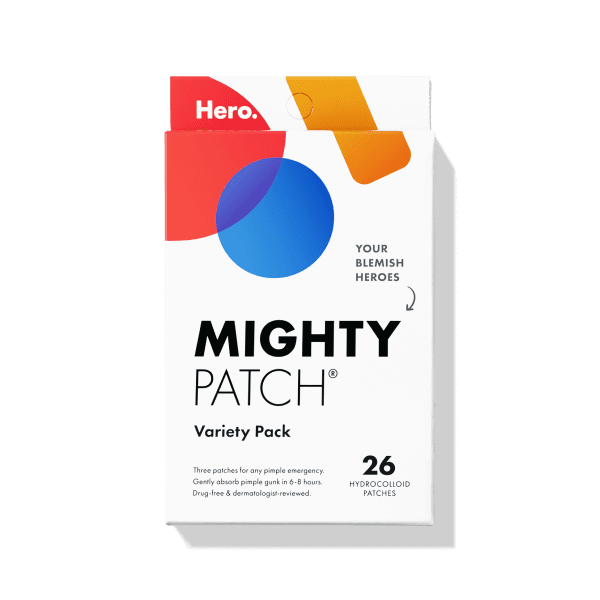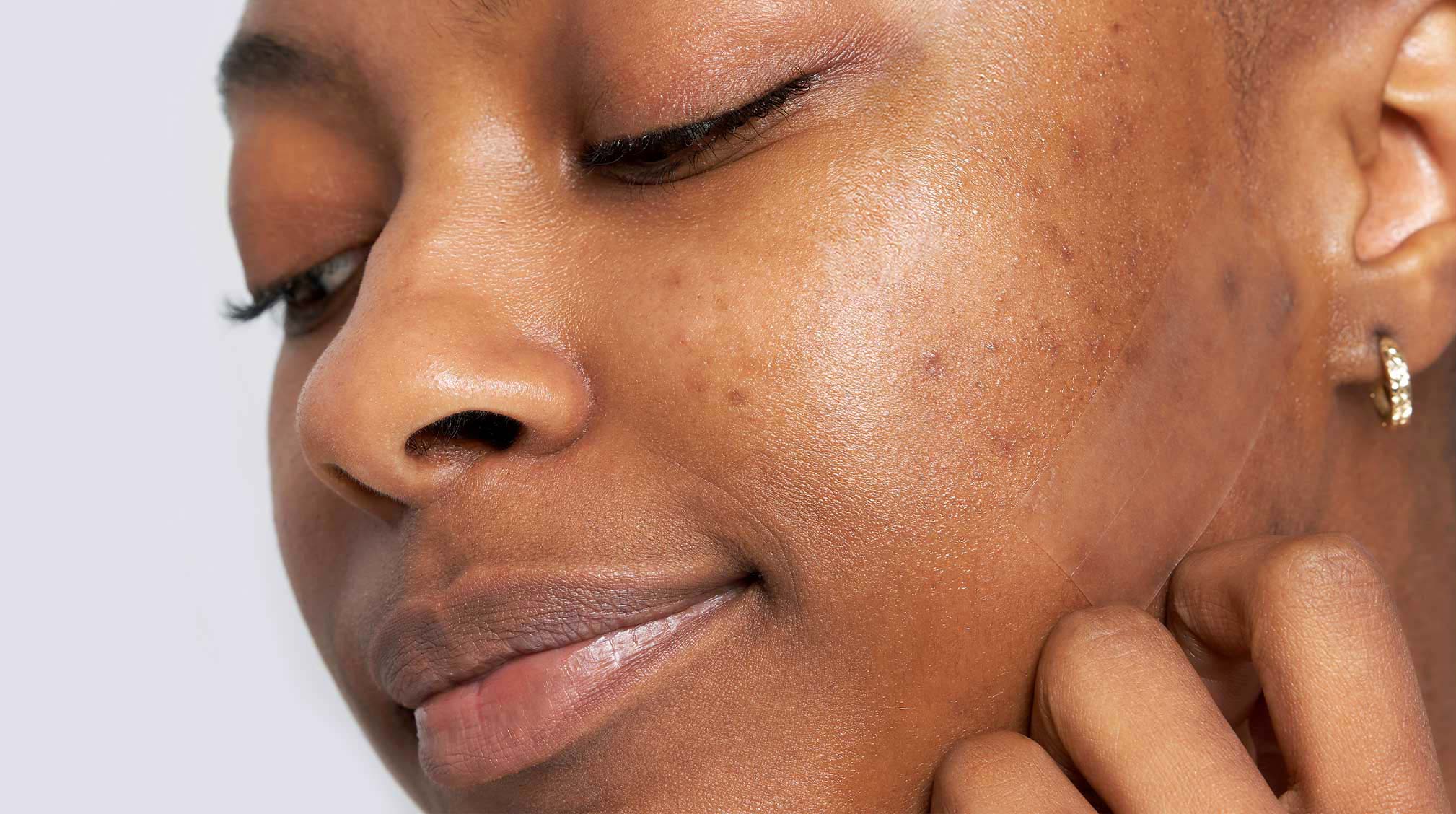
If you’ve ever suffered from acne (as 80% of us have), then you know that getting rid of the whitehead or lump is only half the battle. Often, getting rid of the scar left behind after picking or popping is even more difficult than eliminating the pimple itself. Why is that? And what can we do about it?
Here, we’re diving deep into acne’s ugly aftermath – dark spots, hyperpigmentation and the many types of acne scars.
What are the different types of acne scars?
There are a variety of marks, bumps and discoloration left behind after a pimple has healed, but they can be categorized in two general types: hyperpigmentation and acne scars.
Post-inflammatory hyperpigmentation (PIH)
Hyperpigmentation is not considered to be acne scarring, but it is extremely common and occurs in all skin types. Hyperpigmentation is the discoloration left on the skin after a pimple has flattened and is commonly known as dark spots.
Acne scars
On the other hand, real acne scars are depressed or raised marks on the skin caused by either overproduction or underproduction of collagen. There are two main types of real acne scars.
- Atrophic scars are “sunken in” scars, where a pimple left a small “pit” in the skin that creates a sunken appearance. Not enough collagen is made while the pimple heals, so there is a loss of tissue. These types of acne scars are more profound, so they require more significant treatment.
- Hypertrophic scars are raised scars due to an overproduction of collagen and tissue during the healing process.

How to get rid of hyperpigmentation – AKA dark spots
Treating dark spots is easier than treating scars, so we’ll start there. Hyperpigmentation colors can range from light pink to red, or even purple. Dark spots are the most common side effect of acne, and they will fade and lighten over time, even if left alone.
- Use products with vitamin C. One of the most common ways to treat dark spots over the counter is with products that contain vitamin C. The powerful antioxidant helps prevent sun damage, increases collagen production, improves skin tone, and brightens the skin.
- Grab some retinol. Retinol is another over-the-counter product that's been shown to help treat hyperpigmentation. It promotes skin turnover and reduces the appearance of fine lines and wrinkles. Keep in mind that it is a strong product and can sometimes lead to irritation, peeling, drying, and burning. Use it carefully.
- Shop for alpha-hydroxy acids (AHAs). Products with alpha-hydroxy acids exfoliate the outer layer of the skin, which helps reduce the appearance of discoloration.
- Pop on a brightening acne patch. We're obviously a little biased, but our favorite way to treat dark spots is with Micropoint for Dark Spots. The mega-powerful patch features 173 hyaluronic microneedles (that's three times more than other brands) fully loaded with skin-brightening ingredients that make up the Lightning Trifecta™. The Lightning Trifecta™ includes tranexamic acid, niacinamide, and vitamin C to smooth out uneven skin tone.

Types of real acne scars
Atrophic scars
Atrophic scars are the harshest type of acne scars, because they are depressions in the skin. Since they result from a loss of tissue, they require more significant treatment.
- Ice pick scars are small, sharp-pitted scars. They are wider at the skin’s surface and narrow into a point as they reach deeper into the skin.
- Boxcar scars are wide, deep scars that are a few millimeters wide, with sharp edges that go straight down into the skin. They are the most common type of acne scar.
- Rolling scars are broader depressions that create a wavy, uneven surface (or “rolling”) texture on the skin. Unlike boxcar scars, rolling scars do not have sharp edges.
Hypertrophic scars
Hypertrophic scars occur when there is an overgrowth of repair tissue. They are most commonly found on the body (shoulders, chest, torso and back), but can also appear around the jawline. Keloid scars are a type of hypertrophic scar. In this severe form, the scar is larger than the blemish area itself.
How to get rid of acne scars
Over-the-counter treatments for acne scars
- Salicylic acid is found in many acne treatments. In addition to helping get rid of acne scars, it also exfoliates the skin, clear pores of dirt, and reduces swelling and redness.
- Retinoids also help with acne scarring by speeding up cell regeneration and reducing discoloration, making the scar less visible. It does make your skin sensitive to the sun, so be sure to slather on the sunscreen.
In-office procedures for acne scars
- Microneedling uses a hand-held roller with tiny needles that puncture the skin. As the skin heals from the small wounds, it creates more collagen. This helps reduce the depth of acne scars. (Average pricing: $100-$700 per session)
- Microdermabrasion is a non-invasive acne scars treatment that deeply exfoliates the top layer of the skin. It works best with scars that are closer to the surface. (Average pricing: $75-$300 per treatment)
- Laser skin resurfacing uses—you guessed it—lasers to remove the top layer of the skin which helps stimulate new skin cell growth and dramatically reduce the appearance of acne scars. (Average pricing: $1,000- $2,300 per session)
- Chemical peels use a chemical solution to exfoliate the skin which then causes the top layer of the skin to peel off. This method works best for deeper scars. (Average pricing: $100-$1,000 per session)
- Steroid injection is a cortisone shot a dermatologist injects directly to the scar which helps reduce its size. (Average pricing: $50-$100 per shot).

Pro tip: Wear sunscreen!
Whether you struggle with dark spots or acne scars, one of the easiest ways you can prevent them from appearing is by applying sunscreen every day. Yes, even when it's cloudy and overcast-y outside. Sunscreen will help prevent acne from appearing in the first place and also prevent dark spots from getting darker.
Start simply and slowly
The first step is to determine which type of acne scarring you have. Your dermatologist can help with that. Then start with the easiest treatment option, or the one you are most comfortable with.
At home, you should exfoliate consistently, as it helps to slough off the scarred skin and promotes skin regeneration. Also, active ingredients perform best when you start at a low percentage and move to a higher one when your skin gets used to it. The Mighty Patch Micropoint for Dark Spots uses a combo of brightening actives to help fade dark spots.
When it comes down to it, acne scars are not going to disappear overnight. So just take it one step at a time, and try your best to prevent new scars from forming (hands off that pimple!). Mighty Patch OG can help with that. 😉
RELATED READ: Micropoint for Blemishes – the at-home cortisone shot?
[[product-ad]]

